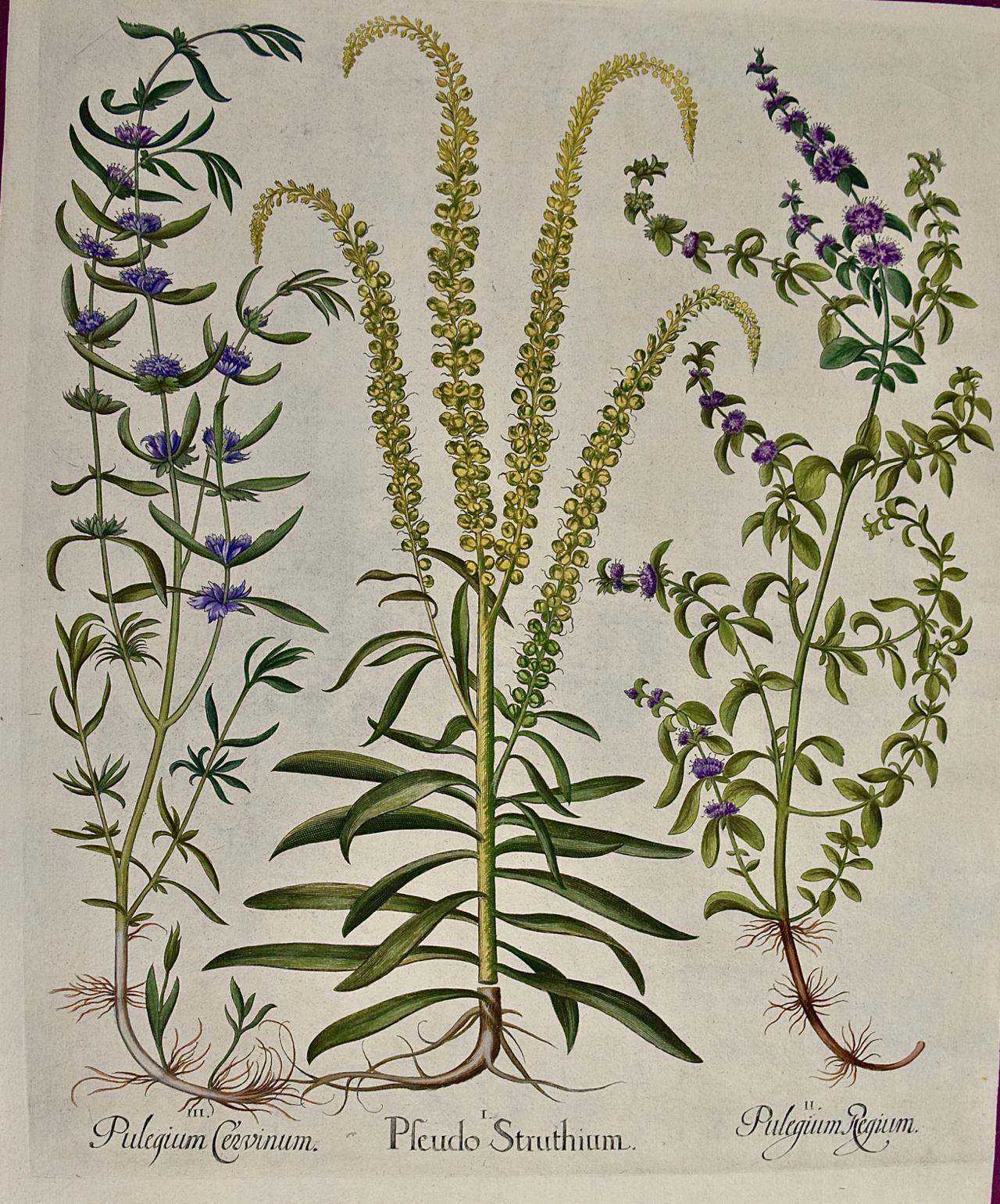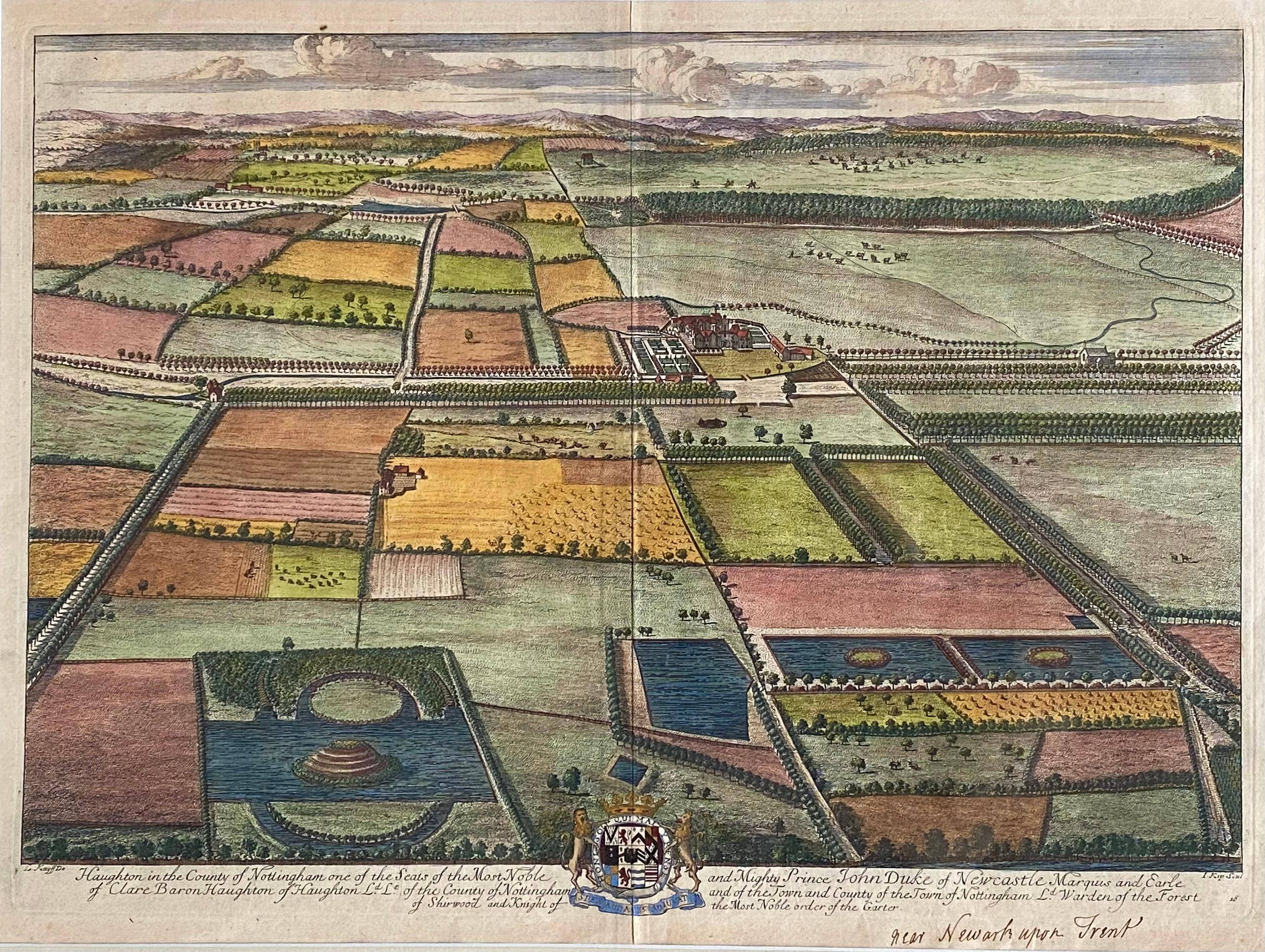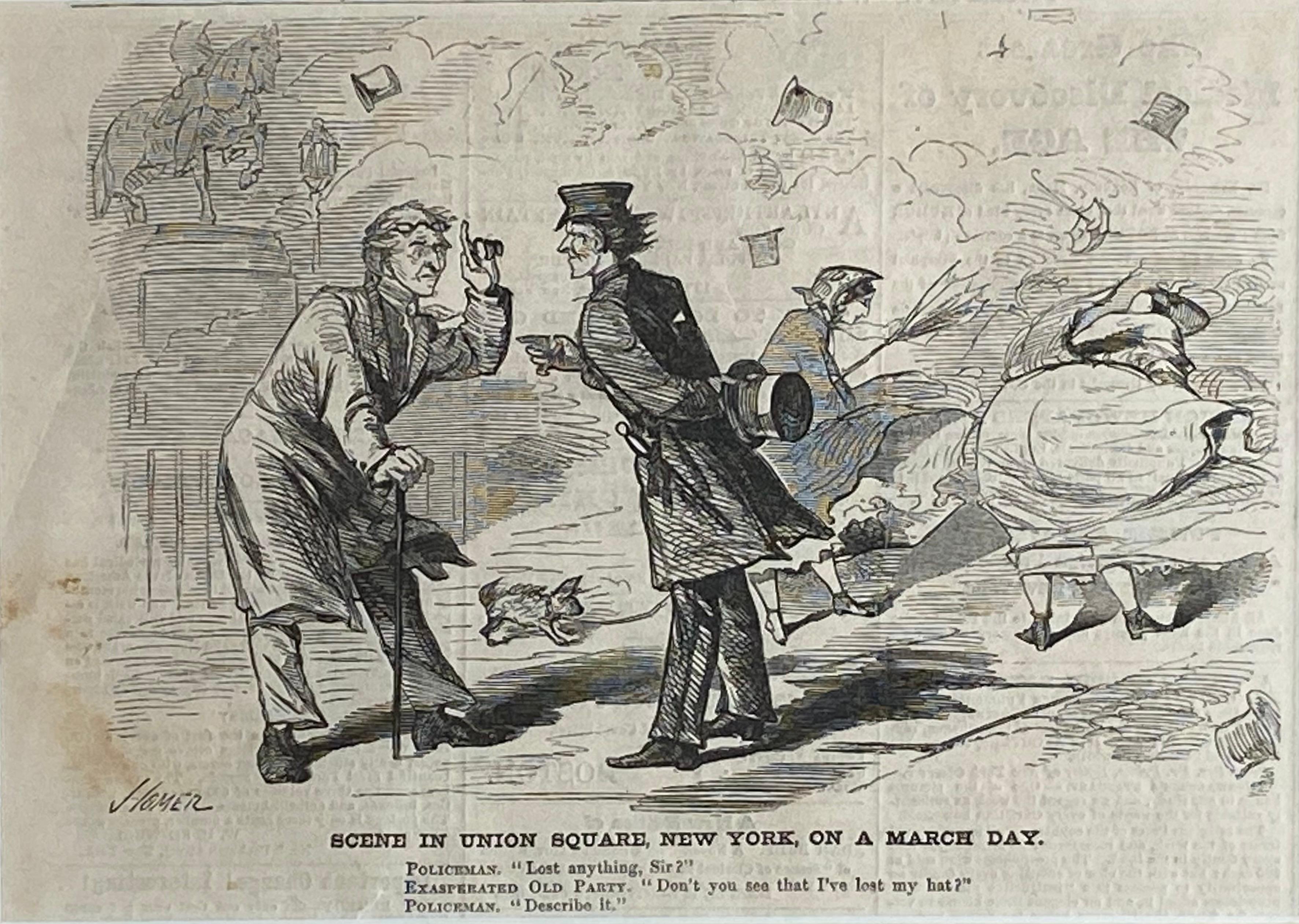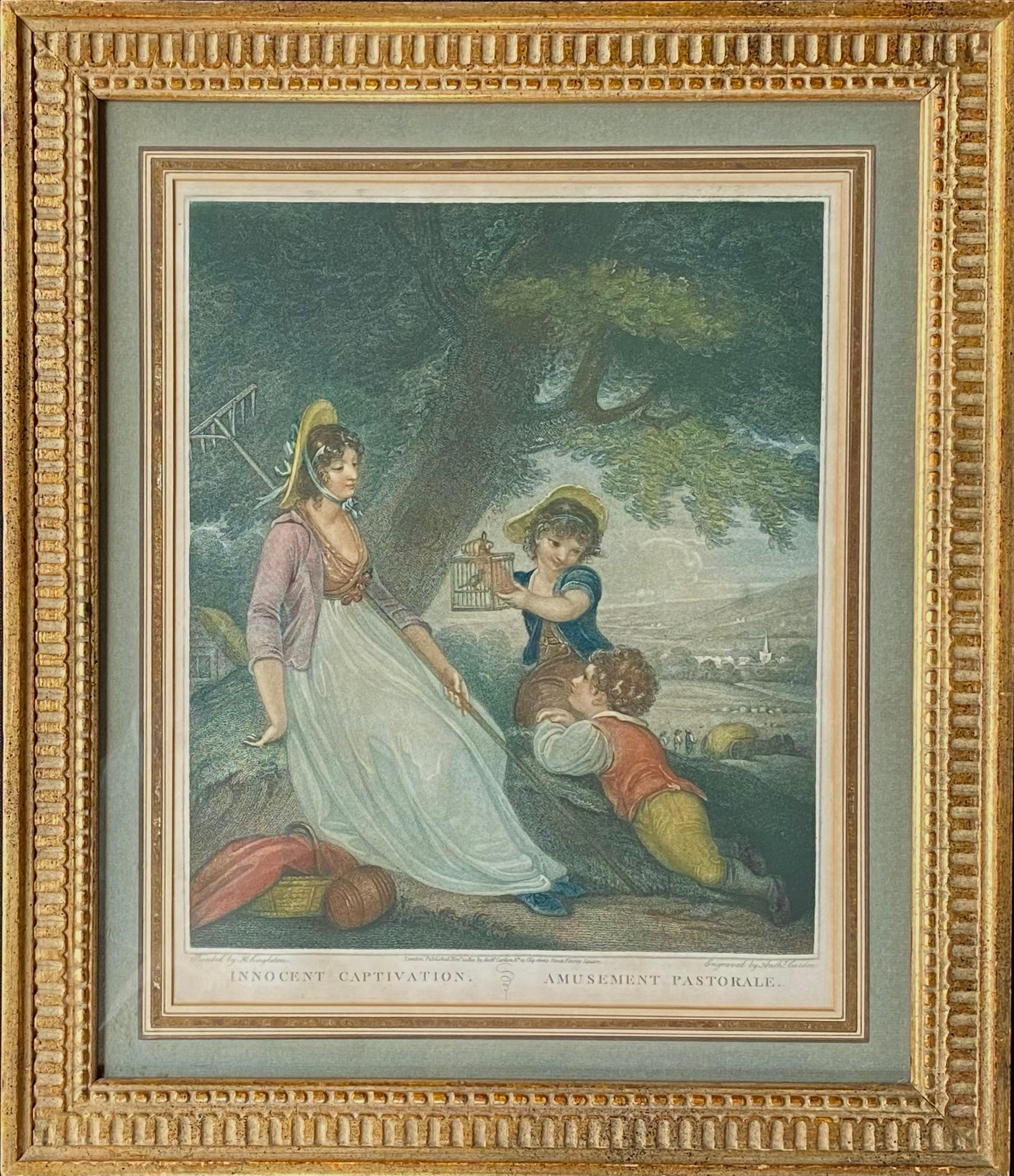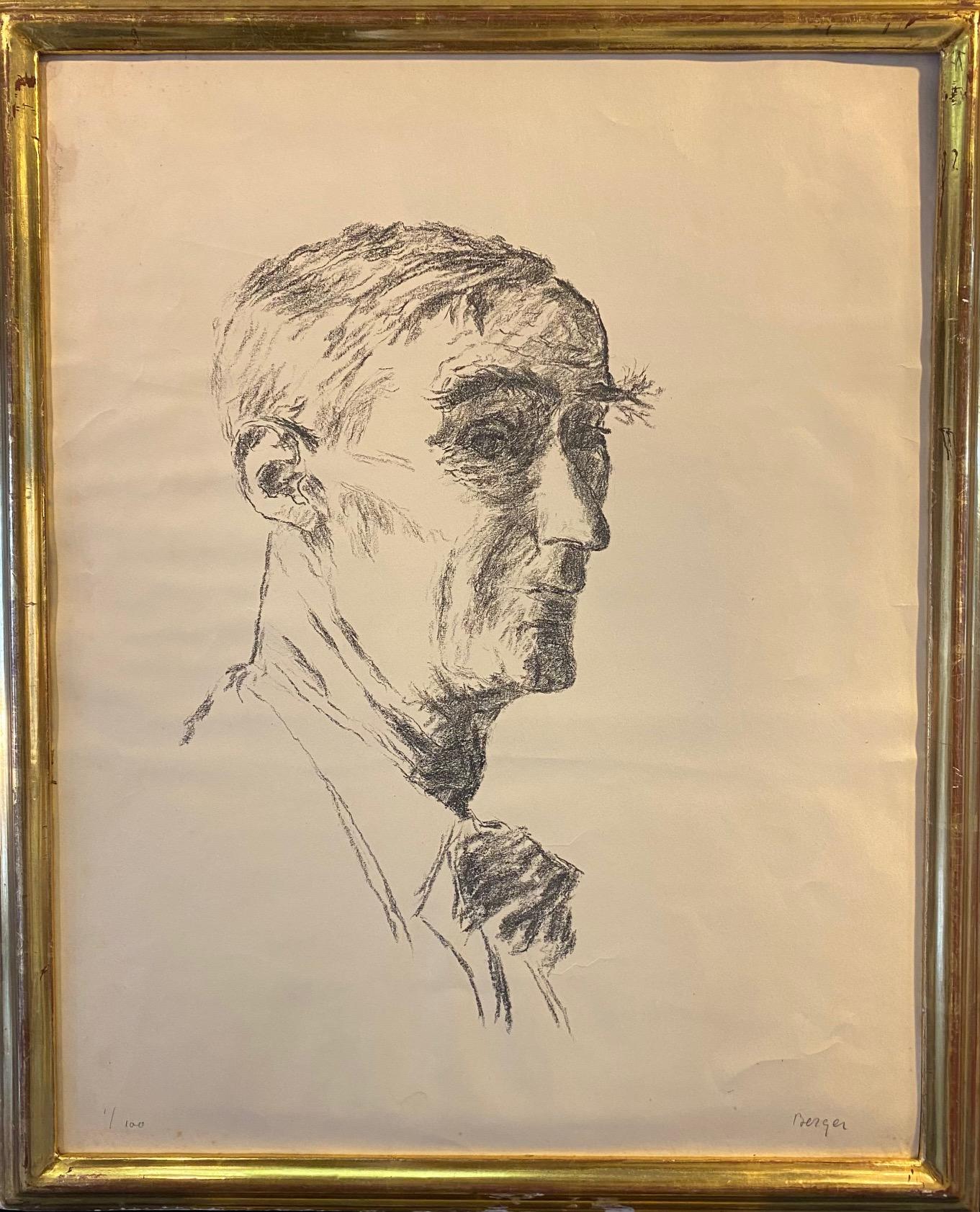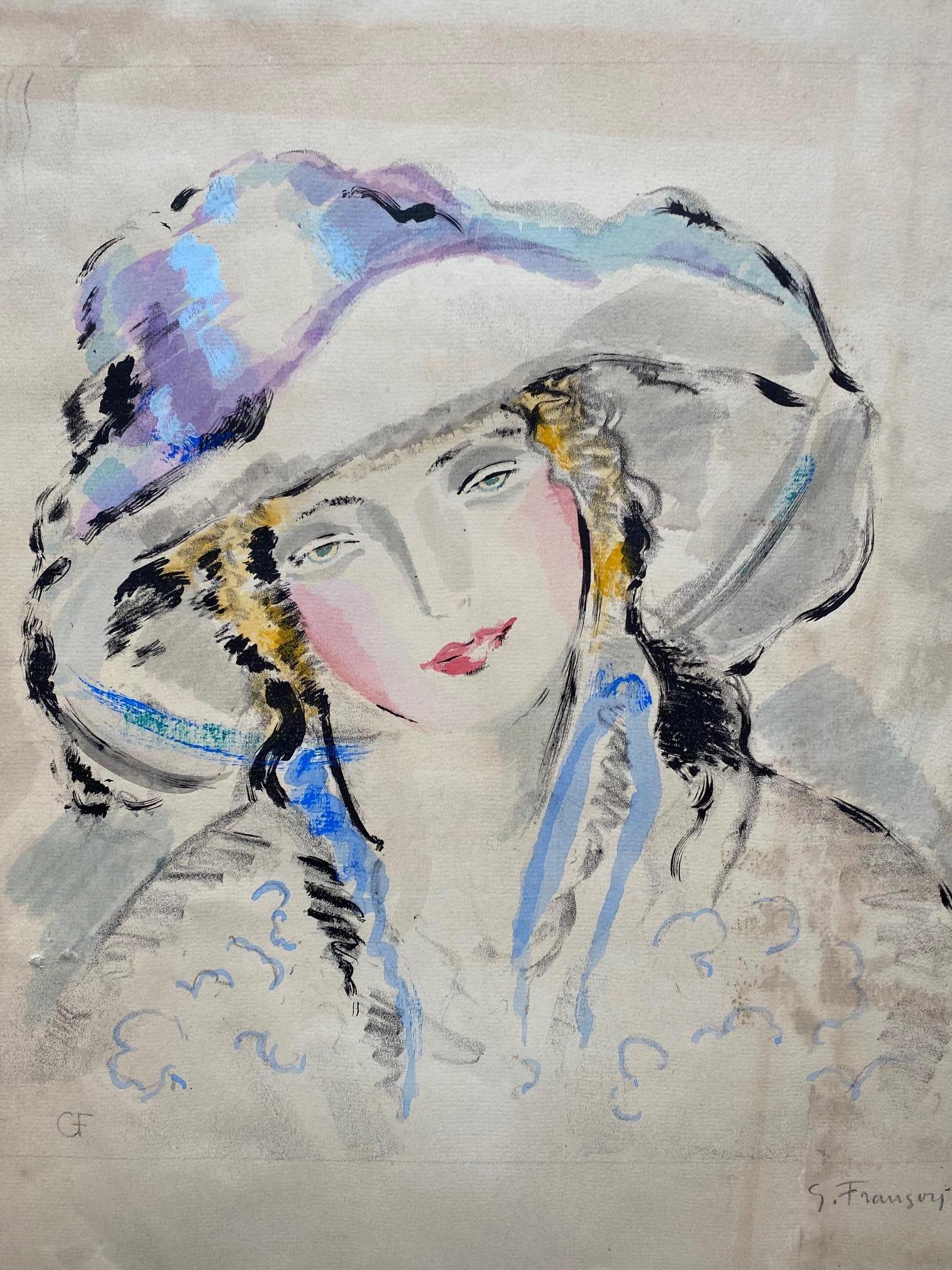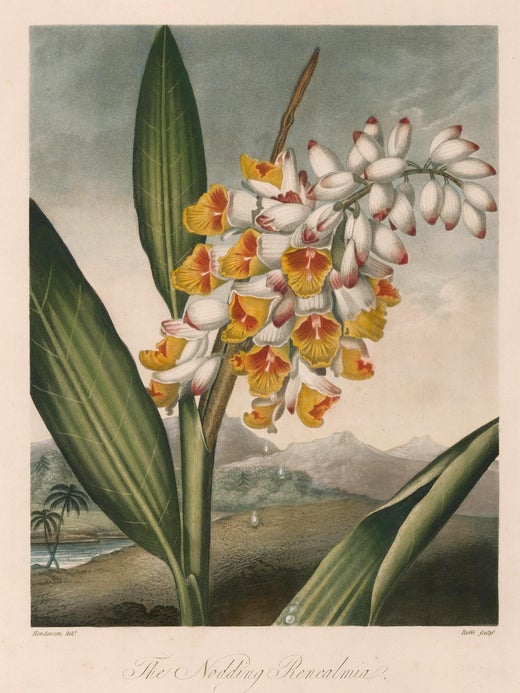Items Similar to Indian Reed (Cana)
Want more images or videos?
Request additional images or videos from the seller
1 of 8
Dr. Robert John ThorntonIndian Reed (Cana)1804
1804
About the Item
DR. ROBERT JOHN THORNTON (c1765 – 1832).
The Temple of Flora.
London, 1798-1810.
Painted by Reinagle, Henderson, Pether, et. al.
Engraved by Ward, Caldwall, Earlom, et. al.
Aquatint, mezzotint, and/or stipple engraving finished by hand.
Approximately 17.75” x 22.5” Unframed.
5 frontice pieces, 32 plates; generally 29-30 per volume, 1 or more frontice pieces.
As a boy, Robert John Thornton (d.1837) demonstrated his love of natural history with his own botanical garden and an aviary, which contained every species of English hawk, most of them captured by himself. He took his Cambridge M.B. and, following in his father's footsteps, set up practice as a London doctor. Upon inheriting the family fortune in 1797, Thornton desired to leave his mark on the world in the form of a massive work dedicated to Carolus Von Linnaeus, the great Swedish naturalist. For his own aggrandizement and that of his beloved England, Thornton wished it to surpass in scope, illustration, paper, and topography any publication produced in any other European country. He felt he was engaged upon "a national undertaking", and dedicated this homage of philosophic and literary distinction to Queen Charlotte. It was to be titled The Temple of Flora; or Garden of Nature Picturesque Botanical Plates of the New Illustration of the Sexual System of Linnaeus. Desiring the national glorification of botany and its alliance with the arts of painting and engraving, Thornton was the first person to juxtapose landscape backgrounds with his floral subjects. He opened an art gallery of the paintings from which the prints were made and subscriptions for the forthcoming books were sold. Copies of the work were sent to the Queen and Prince Regent, and to the Emperor of Russia, who sent Thornton a ring in acknowledgment of the "splendid and elaborate Botanical works."
The Thornton prints, originally to number seventy in all, were barely published in an edition of thirty at the author's expense between the years 1799 and 1807. Despite his efforts, Thornton was unable to succeed financially. Technically The Temple of Flora, as it came to be known, was not a success due to botanical inaccuracies and rather insipid text all based on Thornton's aesthetic sense. However, it is the forceful stylization of flowers, together with their historical, allegorical and fanciful backgrounds that place The Temple of Flora among the greatest botanical books of all time.
Though Thornton actually painted only one picture used for the engravings in his Temple, "The Roses", he literally directed his flower pictures. He chose the plants, arranged the symbolism and the backgrounds. For example, in the "Night-Blowing Cereus" the moon illuminates the turret clock, which has just struck midnight, the hour when this flower is fully open. Henderson, Reingal, Edwards and Pether are among the artists hired by Thornton to work on the flower designs and their backgrounds. Many times they would collaborate, as in the aforementioned "Cereus" where it states "The Flower by Reinagel, Moonlight by Pether". These plates were executed by the likes of Bartolozzi and other English master engravers and are a varied combination of mezzotint, aquatint, stipple engraving and finished in watercolor by hand. The text, primarily composed by Thornton, was lengthy, somewhat fanciful and included rather exaggerated poetry. Thornton was a man of his era, a time of romanticism, when artistic tastes ran to the sentimental, symbolic, and dramatic. The flowers from the Temple of Flora are delightful examples of that style.
In spite of tremendous public exposure and a dedication to Queen Charlotte, Thornton's venture was a financial disaster. While he attributed this to the continental war, no doubt his over-zealous attention to details, none too scientific, largely contributed to his failure. By 1811, Thornton was forced to petition Parliament for permission to set up a lottery. "An Act to enable Dr. Robert John Thornton to dispose of his collection of paintings, drawings and engravings, together with several copies of certain books therein mentioned, by way of chance" was passed in May of that year. Thus, the Quarto or Lottery edition of The Temple of Flora was published. This work, smaller in scale but not in romantic spirit, was to salvage Thornton's expenses for the original folio edition. Hoping to sell twenty thousand tickets at two guineas each, Thornton estimated the worth of his ten thousand prizes to be 77,000 pounds. This was a generous estimate as the complete sale of tickets would be worth no more than 42,000 pounds. Once again, Thornton's venture resulted in disaster. For the remaining years of his life, Thornton continued his medical practice with varying success, and attempted a brief, unhappy collaboration with the poet William Blake. Sadly when he died in 1837 his family was almost destitute. But despite these early failures, The Temple of Flora has now a permanent place as one of the greatest prizes of all time.
Reference:
Flower & Fruit Prints. Dunthorne. Da Capo Press. Washington, D. C., 1938.
The Temple of Flora: Robert Thornton. King. Little, Brown and Company, NY, 1981.
- Creator:Dr. Robert John Thornton (1768 - 1837, English)
- Creation Year:1804
- Dimensions:Height: 38.5 in (97.79 cm)Width: 30.5 in (77.47 cm)Depth: 1.75 in (4.45 cm)
- Medium:
- Movement & Style:
- Period:
- Condition:Framed to museum specifications using archival matting, backing, hinging. Glazed with ultraviolet filtering Plexiglas. Mirrored frame.
- Gallery Location:Florham Park, NJ
- Reference Number:
Dr. Robert John Thornton
Robert John Thornton (1765-1832) was attracted to natural history at an early edge and created his own botanical garden and an aviary as a boy. He graduated from Cambridge with a medical degree and set up practice as a London. He inherited his family fortune in 1797, which allowed Thornton the opportunity to devote time to his lifelong goal of creating an extensive scholarly work dedicated to the great classical Swedish naturalist, Carolus Von Linnaeus (1707-1778), also known as Carl von Linné, who developed a system for the classification of plants and animals, and is known as the father of taxonomy. Thornton's goal was to exceed any previous publication produced in any European country in terms of the scope of the project, the quality of the illustrations and the paper, as well as the beauty of the landscapes depicted as backgrounds for the plants. Thornton was the first person to incorporate landscape backgrounds with his botanical subjects. He wanted for the publication to be of both academic importance as well as artistic beauty. He dedicated his work and subsequent publication "The Temple of Flora; or Garden of Nature Picturesque Botanical Plates of the New Illustration of the Sexual System of Linnaeus" to Queen Charlotte. Thornton opened an art gallery to display the paintings from which the prints were made and as a place to sell subscriptions to the forthcoming books. Queen Charlotte, the Prince Regent, and the Emperor of Russia received copies of the book. Although the publication was not successful financially for Thornton, the stylization of the illustrated flowers and their historical, allegorical and fanciful backgrounds led to The Temple of Flora being considered one of the greatest botanical books of all time.
About the Seller
5.0
Vetted Seller
These experienced sellers undergo a comprehensive evaluation by our team of in-house experts.
1stDibs seller since 2014
164 sales on 1stDibs
Typical response time: 2 hours
- ShippingRetrieving quote...Ships From: Florham Park, NJ
- Return PolicyA return for this item may be initiated within 1 day of delivery.
More From This SellerView All
- Casa de Crescenzo (Italy)By Antonio AquaroniLocated in Florham Park, NJROMA (Italy) A. Aquaroni. Engraving. Modern Hand-Color. Rome, Italy 1750. Ever wonder what pre-dated the postcard? By the mid-eighteenth century, travel and exploration had be...Category
1750s Academic Prints and Multiples
MaterialsEngraving, Watercolor
- Raphael's Loggia Plate VII. Pilaster Bottom Priced as a pair with Pilaster TopBy Gaetano SavorelliLocated in Florham Park, NJRAPHAEL. Raffaello Sanzio d’Urbino. (1483 – 1520) Delle Logge di Rafaele nel Vaticano. Gaetano Savorelli, artist. (1732- 1791) Ludovico Teseo, draughtsman. (1731-1782) Pietro ...Category
18th Century and Earlier Academic Prints and Multiples
MaterialsGouache, Watercolor, Engraving
- XIV. Etruscan UrnBy Sir William HamiltonLocated in Florham Park, NJ...Etruscan, Greek and Roman Antiquities.... Hamilton, Sir William. 1730 – 1803. Collection of Etruscan Greek and Roman Antiquities from the Cabinet of the Hon. W. Hamilton. 4 vols. Naples, 1766-7. D’Hancarvills, sculpt. Aquatint Engravings in Black and Terra Cotta Inks. Finishing in Original Hand-Color. In 1764, Sir William Hamilton arrived in Naples to take up his new appointment as British Envoy Extraordinary to the Bourbon Court of King Ferdinand IV. At the time of his arrival, Italy was still a largely untapped field of archaeological discovery and there was ample opportunity for the private individual to amass a collection or 'cabinet' of classical antiquities at relatively little expense. The sites of the buried cities of Pompeii and Herculaneum, although now under Royal control, were still being only haphazardly excavated and were openly vandalized. Hamilton himself complained of the fact, but also seems to have taken advantage of it. Hamilton's first collection was in fact acquired by the British Museum in 1772 where it formed the foundation of the now great collection of Greek and Roman antiquities. This was the first major collection of Greek vases (or, as they were then known, Etruscan) to reach England's shores. "To Hamilton belongs the merit of being the first to appreciate with warmth the severe beauty of their shapes, colouring and drawing, the mingled simplicity and feeling of the designs figured upon them; and it was he who recognized the value of these unpretentious vessels for forming and ennobling modern art-taste". (Adolph Michaelis, Ancient Marbles in Great Britain, Cambridge 1882, p. 110) Hamilton found a worthy ally in Josiah Wedgwood who was setting up a new factory appropriately called "Etruria". Opened in June of 1769, Wedgwood was to use Hamilton's models again and again in his pottery with many designs taken directly from the engravings. Etruscan antiquities...Category
18th Century and Earlier Academic Prints and Multiples
MaterialsEngraving
- Solanum Pomiferum Tomato VegetableBy Basilius BeslerLocated in Florham Park, NJBASIL BESLER (1561 – 1629). Hortus Eystettensis. Konrad Bauer. Altdorf, 1613, 1640, 1713 – 50. Copper plate engravings with modern hand-color 374 plates. 21 ¼” to 21 ½” x 16” t...Category
18th Century and Earlier Academic Prints and Multiples
MaterialsEngraving
- Alphabet Letter "T"Located in Florham Park, NJAn Alphabet of Capital Letters: Selected from the Illuminations of Italian Chorale Books of the Fifteenth and Sixteenth Centuries. Arundel Society. London, 1862. Engraving. Printed...Category
1860s Academic More Prints
MaterialsGold
- Raphael Loggia (Pair). Plate XII. Pilaster Top. Priced as a Pair.By Gaetano SavorelliLocated in Florham Park, NJRAPHAEL. Raffaello Sanzio d’Urbino. (1483 – 1520) Delle Logge di Rafaele nel Vaticano. Gateano Savorelli, artist. (1732- 1791) Ludovico Teseo, draughtsman. (1731-1782) Pietr...Category
18th Century and Earlier Academic Prints and Multiples
MaterialsGouache, Watercolor, Engraving
You May Also Like
- Flowering Peppermint Plants: A 17th C. Besler Hand-colored Botanical EngravingLocated in Alamo, CAThis is a hand-colored copper plate engraving entitled "Pulegium Cervinum, Pseudo Pulegium Struthium, Pulegium Regium", depicting flowering Peppermint, Weld and Pennyroyal plants res...Category
1640s Academic Still-life Prints
MaterialsEngraving
- “Haughton in the County of Nottingham” (Near Newark Upon Trent)By Johannes KipLocated in Southampton, NYAn original hand colored engraving by Johannes 'Jan' Kip (1653-1722) of Haughton in the County of Nottinghamshire, one of the seats of Prince John Duke of ...Category
Early 1700s Academic Landscape Prints
MaterialsEngraving
- “Scene in Union Square, New York on a March DayBy Winslow HomerLocated in Southampton, NYOriginal wood engraving on paper. Taken from Harper’s Weekly, April 7, 1860. Signed “Homer” in the plate. Condition is good. Slight staining lower left. Very slight tear to the l...Category
1860s Academic Figurative Prints
MaterialsArchival Paper, Engraving
- “Innocent Captivation Amusement Pastorale”By Anthony CardonLocated in Southampton, NYOriginal stipple engraving on a verge type of hand laid paper. The overall size of the engraving is 15.75 inches by 12.75 inches The image size of the engraving is 14 inches by 12 i...Category
Early 1800s Academic Figurative Prints
MaterialsEngraving, Laid Paper
- Portrait of a man by Hans Berger - Drawing 44x50 cmLocated in Geneva, CHWork on paper Ed: 1 /100Category
Early 20th Century Academic Portrait Prints
MaterialsEngraving, Crayon
- Portrait of woman by Gustave François - Engraving 44x54 cmBy Gustave Francois (Barraud)Located in Geneva, CHWork on paper without frameCategory
Mid-20th Century Academic Portrait Prints
MaterialsEngraving
Recently Viewed
View AllMore Ways To Browse
Antique Reed
Hope Indian
Dr No
Antique Indian Prints
Antique Prints Indian
Set Of Floral Prints
European Botanical Art Prints
Romanticism Print
Reeded Ring
Antique Fruit Print
Antique Fruit Prints
Indian Temple
Antique Floral Art Prints
Little Prince Prints
Small Botanical Print
Botanical Print Set
William Reed
Indian King
